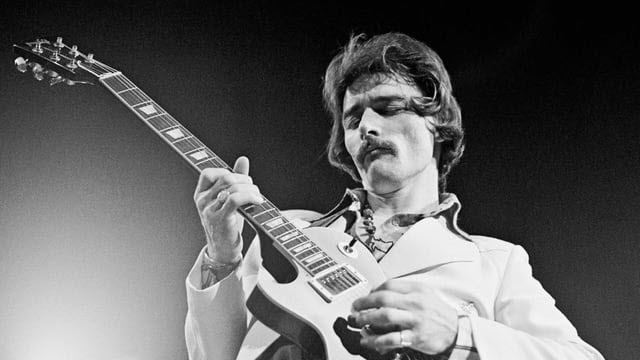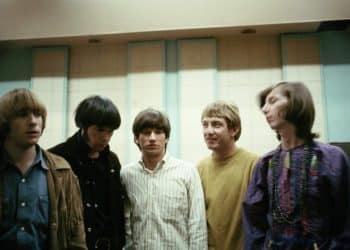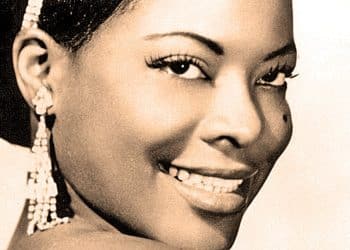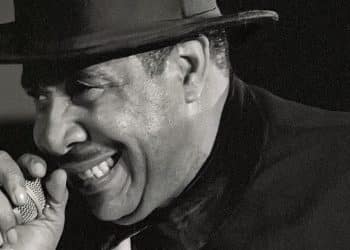Few bands have managed to leave an indelible mark on music history quite like The Allman Brothers Band. With their unmistakable blend of blues, jazz, and country, this legendary group is credited with pioneering Southern rock and creating a sound that transcends generations. From soulful guitar solos to heartfelt lyrics, their music resonates deeply with fans and newcomers alike. Whether you’ve spent countless hours jamming to their iconic tracks or are just discovering their genius, it’s impossible to ignore the raw energy and emotional depth The Allman Brothers Band brings to the table.
In this article, we’re diving into the top 10 most popular songs of all time by this trailblazing band. These tracks are more than just tunes—they’re stories, emotions, and musical masterpieces that have stood the test of time. From the fiery licks of Duane Allman’s slide guitar to Gregg Allman’s soulful vocals, these songs showcase the band at their very best. Whether it’s the anthemic grooves of “Ramblin’ Man” or the atmospheric beauty of “Jessica,” each track on this list is a testament to their unparalleled artistry. Get ready to immerse yourself in the soundscape of one of rock’s most celebrated bands!
1. Ramblin’ Man (1973)
Few songs capture the freewheeling spirit of Southern rock quite like “Ramblin’ Man.” Released in 1973 on the Brothers and Sisters album, this song became The Allman Brothers Band’s highest-charting single, reaching No. 2 on the Billboard Hot 100. Written and sung by guitarist Dickey Betts, the lyrics tell the story of a man who was “born a ramblin’ man,” forever destined to chase the open road. Betts drew inspiration from his own nomadic lifestyle, as well as the classic country and blues traditions that shaped the band’s sound. The track blends twangy country rock with bluesy guitar licks, creating an upbeat, feel-good anthem that remains timeless. Betts’ lead guitar work, combined with Les Dudek’s harmonized lines, gives the song a signature sound that instantly transports listeners to the Southern highways. While the song has an undeniably cheerful melody, its lyrics carry a bittersweet undertone, reflecting the sacrifices of a life spent moving from town to town. “Ramblin’ Man” is more than just a hit—it’s a defining song of the Southern rock genre, embodying the restless, independent spirit of the Allman Brothers Band and their enduring legacy.
2. Jessica (1973)
An instrumental masterpiece, “Jessica” stands as one of The Allman Brothers Band’s most impressive showcases of musicianship. Written by Dickey Betts and released on Brothers and Sisters in 1973, the song was named after his daughter, Jessica, who inspired its bright and uplifting energy. The track is a thrilling six-minute journey of seamless guitar harmonies and dynamic piano work. Unlike the blues-heavy jams the band was known for, “Jessica” leans into more of a jazz and country rock feel, with a melody that almost seems to dance across the fretboard. Betts wrote the piece with the goal of crafting an instrumental song that could still captivate listeners without the need for lyrics—a challenge he undoubtedly succeeded in. Chuck Leavell’s flowing piano solo adds an extra layer of depth, giving the track its signature lighthearted charm. “Jessica” has since become one of the most beloved instrumentals in rock history, frequently used in films, commercials, and even as the theme for Top Gear. Its uplifting and carefree vibe makes it the perfect road trip song, a testament to The Allman Brothers Band’s ability to create music that speaks volumes without a single word.
3. Midnight Rider (1970)
Few songs capture the essence of determination and resilience like “Midnight Rider.” Released in 1970 on Idlewild South, this track is one of Gregg Allman’s most recognizable compositions. The song’s haunting melody, smooth acoustic guitar, and soulful vocals create an atmosphere of longing and restlessness. Lyrically, “Midnight Rider” tells the tale of a man on the run, determined to keep moving forward despite the obstacles in his way. The chorus, with its defiant refrain of “I’ve got to run to keep from hidin’,” has become a rallying cry for those refusing to be held back by life’s hardships. The song’s production is beautifully restrained, allowing the rich, bluesy instrumentation to shine. The intertwining guitar work of Duane Allman and Dickey Betts, combined with subtle percussive elements, adds depth to the song’s evocative soundscape. Though it wasn’t a major hit upon its initial release, “Midnight Rider” has since become a staple of classic rock radio and one of the band’s most enduring songs. It has been covered by numerous artists, but no version quite captures the raw emotion and effortless cool of the original.
4. Whipping Post (1969)
“Whipping Post” is a song that perfectly encapsulates the raw power and emotional depth of The Allman Brothers Band. Featured on their 1969 self-titled debut album, it has since become one of their defining tracks. The song begins with an ominous bassline, instantly setting a mood of tension and heartbreak. As Gregg Allman’s soulful voice enters, he delivers lyrics filled with pain and betrayal, comparing his suffering to being tied to a whipping post. The intensity builds gradually until it erupts into an explosive instrumental jam, showcasing the band’s signature blend of blues, rock, and jazz influences. The song’s complex time signatures and shifting dynamics make it a standout in their catalog, proving that the Allman Brothers were not just another blues-rock band, but true innovators. While the studio version is powerful, it’s the legendary live renditions—especially the 23-minute version from At Fillmore East—that truly capture the song’s fiery spirit. In concert, “Whipping Post” became an epic journey of blistering guitar solos, pounding rhythms, and pure emotion, cementing its place as one of the greatest live songs in rock history.
5. Melissa (1972)
“Melissa” is one of the most tender and heartfelt songs in The Allman Brothers Band’s catalog. Written by Gregg Allman, it was originally composed in 1967, but he set it aside for years, feeling it wasn’t quite right for the band at the time. After the tragic death of his brother, Duane Allman, Gregg rediscovered the song and recorded it for the 1972 album Eat a Peach. The song is a gentle departure from the band’s bluesy, jam-heavy style, featuring delicate acoustic guitar work and Allman’s warm, emotive vocals. Lyrically, “Melissa” tells the story of a lonely traveler, forever on the move, yet longing for the love he left behind. There’s an aching beauty to the song, made even more poignant by the real-life loss that surrounded its recording. The chorus, with its soft repetition of “Sweet Melissa,” feels like a lullaby, soothing and melancholic all at once. Over the years, “Melissa” has become a favorite among fans, often played at the end of Allman Brothers concerts as a moment of reflection. It remains a shining example of Gregg Allman’s songwriting brilliance and the emotional depth that made their music so enduring.
6. Blue Sky (1972)
“Blue Sky” is one of the most uplifting and melodic songs in The Allman Brothers Band’s catalog. Released on their 1972 album Eat a Peach, the song was written and sung by guitarist Dickey Betts as a tribute to his then-wife, Sandy “Bluesky” Wabegijig. From the moment the bright, chiming guitar chords kick in, the song radiates warmth and joy, standing in contrast to the heavier blues-rock jams the band was known for. The dual lead guitar harmonies of Betts and Duane Allman are nothing short of mesmerizing, creating an effortlessly flowing musical conversation that is both intricate and relaxed. The song captures the feeling of a carefree afternoon, with its lyrics celebrating love, nature, and simple pleasures. The line, “Good ol’ Sunday morning, bells are ringing everywhere,” evokes a peaceful, almost spiritual sense of contentment. Tragically, Eat a Peach was released after Duane Allman’s passing, making “Blue Sky” one of the last songs to feature his brilliant guitar work. Though originally sung by Betts, Gregg Allman often performed it live in later years, keeping its legacy alive. “Blue Sky” remains a fan favorite and one of the most beautiful expressions of optimism in rock history.
7. In Memory of Elizabeth Reed (1970)
A true instrumental tour de force, “In Memory of Elizabeth Reed” is a testament to The Allman Brothers Band’s jazz influences and improvisational brilliance. Written by Dickey Betts and released on the Idlewild South album in 1970, the song was inspired by a woman Betts once knew and named after a headstone he saw in Rose Hill Cemetery in Macon, Georgia—a place where the band often found inspiration. Unlike typical blues-rock compositions, this track leans into jazz-rock fusion, with intricate guitar work, shifting time signatures, and a fluid, dynamic structure that allows each musician to shine. The dueling guitar solos between Betts and Duane Allman create an electrifying call-and-response effect, while Berry Oakley’s bass lines provide a rich, driving groove. Though the studio version is impressive, “In Memory of Elizabeth Reed” truly came alive in the band’s live performances, especially in the legendary extended version on At Fillmore East. This track remains one of the greatest instrumental compositions in rock, embodying the band’s ability to blend technical mastery with deep emotional expression. Whether played in a smoky jazz club or a massive stadium, its haunting beauty continues to captivate listeners.
8. One Way Out (1972)
“One Way Out” is a high-energy blues-rock classic that perfectly captures the raw power of The Allman Brothers Band in their prime. While originally written by blues legends Elmore James and Sonny Boy Williamson II, the band made the song their own, turning it into one of their most electrifying live performances. The version most fans recognize comes from their iconic 1972 live album Eat a Peach, recorded at the Fillmore East. From the first fiery guitar licks to the stomping, foot-tapping rhythm, “One Way Out” is a song built for the stage. Gregg Allman’s gritty vocals bring urgency to the lyrics about a man desperately trying to escape an unfortunate situation, while Duane Allman and Dickey Betts trade scorching guitar solos. The interplay between the guitars, harmonica, and drums creates an infectious groove that never lets up. The call-and-response dynamic between the instruments and vocals adds to the song’s tension and excitement. Over the years, “One Way Out” has remained a staple in the band’s live shows and an enduring example of their ability to take a simple blues tune and transform it into something truly unforgettable.
9. Ain’t Wastin’ Time No More (1972)
“Ain’t Wastin’ Time No More” is a song born out of grief and resilience. Written by Gregg Allman in the wake of his brother Duane’s tragic death in 1971, this track became the opening song of Eat a Peach, setting the tone for an album that balanced sorrow with celebration. Unlike the band’s heavier blues numbers, “Ain’t Wastin’ Time No More” carries a gospel-infused energy, with a rolling piano groove and soulful vocals driving the song forward. The lyrics reflect on the inevitability of loss but emphasize the importance of pushing on and making the most of life: “Time goes by like a hurricane, faster things they come and go.” Rather than dwelling in sadness, the song serves as a powerful declaration of moving forward, honoring the past while embracing the future. Dickey Betts’ slide guitar work, inspired by Duane’s signature style, adds an extra layer of emotional depth. Over the years, “Ain’t Wastin’ Time No More” has remained a cherished anthem for fans, a reminder that even in the face of tragedy, the best way to honor those we’ve lost is to keep living.
10. Statesboro Blues (1971)
If there is one song that epitomizes The Allman Brothers Band’s ability to breathe new life into classic blues, it’s “Statesboro Blues.” Originally written and recorded by blues pioneer Blind Willie McTell in 1928, the band’s version, featured on their 1971 live album At Fillmore East, became the definitive rendition. The moment Duane Allman’s slide guitar rips through the speakers in the song’s opening, it’s clear that this is something special. His searing, note-bending slide work is nothing short of revolutionary, setting a new standard for blues guitarists everywhere. The song itself tells the story of a man longing to return to his love in Statesboro, Georgia, but the true magic lies in the performance. Gregg Allman’s powerful, gravelly vocals add an edge of urgency, while the rhythm section of Berry Oakley, Butch Trucks, and Jaimoe provides an unstoppable groove. “Statesboro Blues” became one of the band’s most recognizable tracks and a staple of their live performances for decades. Even today, it remains a benchmark for slide guitar excellence and a perfect example of how The Allman Brothers Band honored the blues tradition while making it entirely their own.









